#Rosalba designs
Text

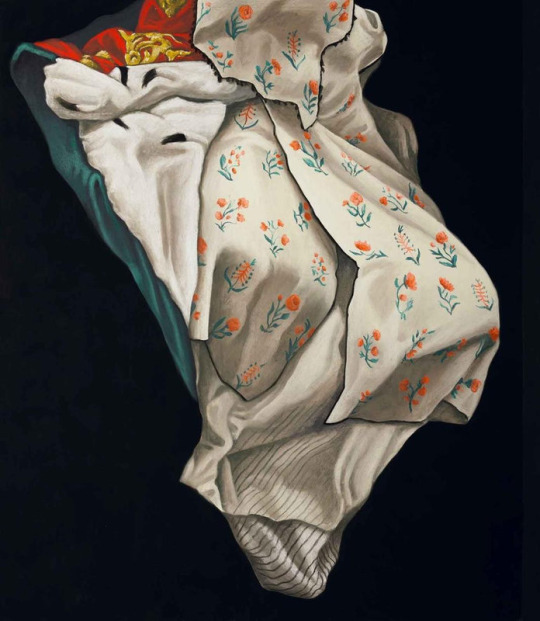


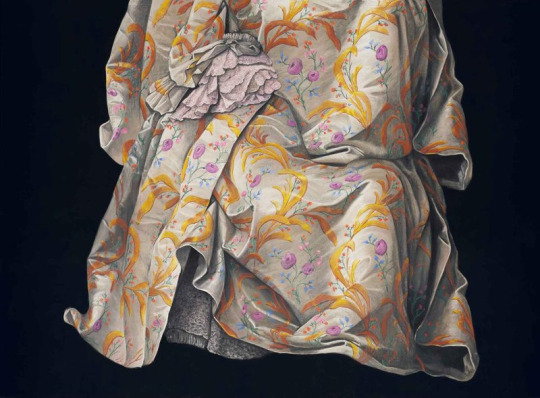


NEW YORK, NY.- The Frick Collection has unveiled a large pastel mural commissioned from the Swiss-born artist Nicolas Party (b. 1980) at the museum’s temporary home, Frick Madison. This site-specific work was created in response to Rosalba Carriera’s Portrait of a Man in Pilgrim’s Costume—one of two eighteenth-century pastels by Rosalba bequeathed to the Frick by Alexis Gregory in 2020. The installation features Rosalba’s superb portrait at the center of a three-wall mural designed by Party, as well as two new related works specially created by Party for this presentation.
Party’s mural includes elaborate draperies that highlight the Rosalba portrait along with two additional pastel portraits he created in response to it. These ornate draperies evoke the work of two other towering figures in European pastels—Jean- Étienne Liotard (1702–1789) and Maurice-Quentin de La Tour (1704–1788)—and echo the function of Venetian Carnival masks, which were designed to both conceal and reveal the features of their wearers. Party’s installation engages devices of disguise and disclosure, from masks to draperies to makeup (often produced with the same chemical components used to make pastel sticks).
The large-scale murals created by Party, whose primary medium since 2013 has been pastel, are ephemeral, lasting only for the duration of a specific exhibition at a unique location. The historical nature of his practice aligns perfectly with the installation at Frick Madison, which has given the museum a unique opportunity to reimagine its permanent collection display, presented for the first time outside the domestic setting of the Gilded Age mansion at 1 East 70th Street.
Courtesy Alain Troung
16 notes
·
View notes
Text
In Colombia just after the Great War, an old man falls from a ladder; dying, he professes great love for his wife. After the funeral, a man calls on the widow – she dismisses him angrily. Flash back more than 50 years to the day Florentino Ariza, a telegraph boy, falls in love with Fermina Daza, the daughter of a mule trader.
Credits: TheMovieDb.
Film Cast:
Florentino Ariza: Javier Bardem
junger Florentino: Unax Ugalde
Juvenal Urbino: Benjamin Bratt
Hildebranda Sanchez: Catalina Sandino Moreno
Don Leo: Hector Elizondo
Lotario Thurgot: Liev Schreiber
Transito Ariza: Fernanda Montenegro
Sara Noriega: Laura Harring
Lorenzo Daza: John Leguizamo
Olympia Zuleta: Ana Claudia Talancón
Escolastica: Alicia Borrachero
America Vicuna: Marcela Mar
Junge Witwe: Angie Cepeda
Fermina Daza: Giovanna Mezzogiorno
Rosalba: Rubria Negrao
capitán samaritano: Andrés Parra
Diego: Horacio Tavera
Alcalde de la ciudad: Salvatore Basile
Institutriz: Margalida Castro
Gran dama hija: Carolina Cuervo
gran dama: Patricia Castañeda
Doña Blanca: Alejandra Borrero
Mujer Atractiva: Paola Turbay
Mujer Atractiva: Noëlle Schonwald
Ricardo Faro: Jhon Álex Toro
dulce vendedor: Julián Díaz
Doliente: Carlos Duplat Sanjuan
Ofelia Urbino – 40’s: catalina botero
puta lotario: Denis Mercado Moreno
Madre superior: Dora Cadavid
…: Indhira Serrano
Film Crew:
Director of Photography: Affonso Beato
Screenplay: Ronald Harwood
Editor: Mick Audsley
Executive Producer: Michael Nozik
Executive Producer: Robin Greenspun
Costume Design: Marit Allen
Executive Producer: Chris Law
Director: Mike Newell
Executive Producer: Scott LaStaiti
Original Music Composer: Antonio Pinto
Novel: Gabriel García Márquez
Executive Producer: Andrew Molasky
Executive Producer: Danny Greenspun
Executive Producer: Dylan Russell
Producer: Scott Steindorff
Executive Producer: Michael Roban
Production Design: Wolf Kroeger
Art Direction: Roberto Bonelli
Art Direction: John King
Art Direction: Paul Kirby
Art Direction: Jonathan McKinstry
Set Decoration: Elli Griff
Supervising Sound Editor: Mark Auguste
Sound Re-Recording Mixer: Simon H. Jones
Sound Re-Recording Mixer: Mark Paterson
Sound Re-Recording Mixer: Mike Prestwood Smith
Sound Effects Editor: Jack Whittaker
Dialogue Editor: Paul Apted
Foley Artist: Peter Burgis
Foley Artist: Andie Derrick
Foley Mixer: Ed Colyer
ADR Mixer: Mark DeSimone
ADR Editor: Howard Halsall
Foley Editor: Derek Trigg
Dialogue Editor: Sam Auguste
Casting: Susie Figgis
Hairstylist: Diana Isabel Agudelo
Hairstylist: Edith I. Amezcua
Hairstylist: Isabel Amezcua
Makeup Artist: Ann Buchanan
Hairstylist: Aurora Gambelli
Makeup Department Head: John E. Jackson
Hairstylist: Maribel Romo
Makeup Artist: Henry Vargas
Wigmaker: Victoria Wood
Wigmaker: Lynne Watson
Co-Producer: Brantley Dunaway
Movie Reviews:
#based on novel or book#cholera#doctor#dying and death#emotions#extramarital affair#Letter#love letter#Marriage#marriage proposal#new love#principal#ship#Teacher#Top Rated Movies
0 notes
Text
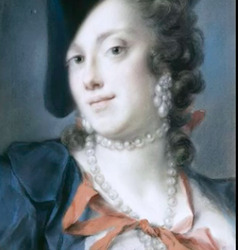
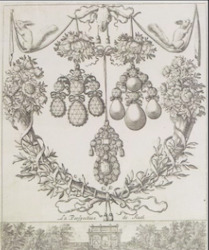
“Caterina Sagredo Barbarigo" by Rosalba Carriera (1735-40) and "Designs for Earrings and Pendant" (1665) presented in “A History of Jewellery: Bedazzled (part 4: Rococo Elegance)” by Beatriz Chadour-Sampson - International Jewellery Historian and Author - for the V&A Academy online, February 2024.
#conferences#inspirations bijoux#peinture#style#chapeau#XVIIIe siècle#perle#illustrations#SagredoBarbarigo#Carriera#ChadourSampson#V&AAcademy#Victoria&AlbertMuseum
0 notes
Text

HAIR: Capture GROUP GIFT!! STEALTHIC
BODY: Reborn eBODY
DRESS: Linnet NEW!! UNA in WE LOVE RP
(For Maitreya, Legacy, Reborn and R. Waifu.
Fatpack included 3 styles and Hud with 28 colors and 6 metals)
SHOES: Rosalba NEW!! UTOPIA DESIGN in FAMESHED
(For Maitreya, Legacy, Reborn, Kupra and GenX.
Fatpack included Hud with 24 colors and tinting option)
POSE: Superstar NEW!! FASHIOWL POSES
(Pack included 10 bento poses)
0 notes
Text




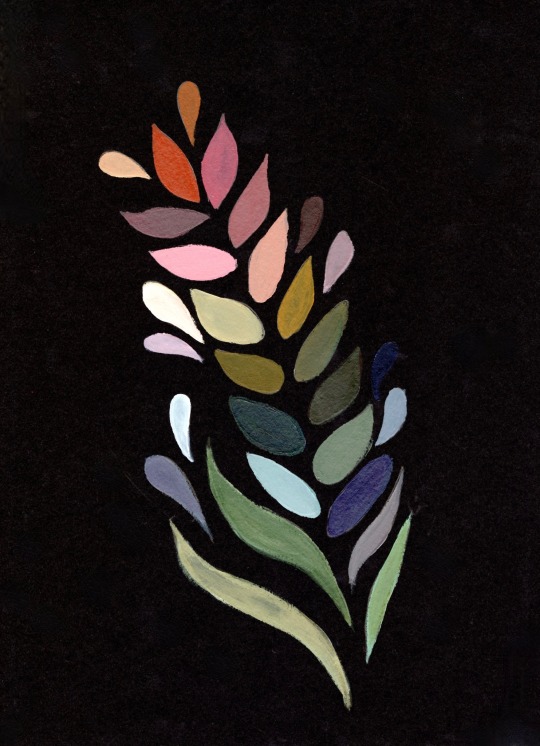
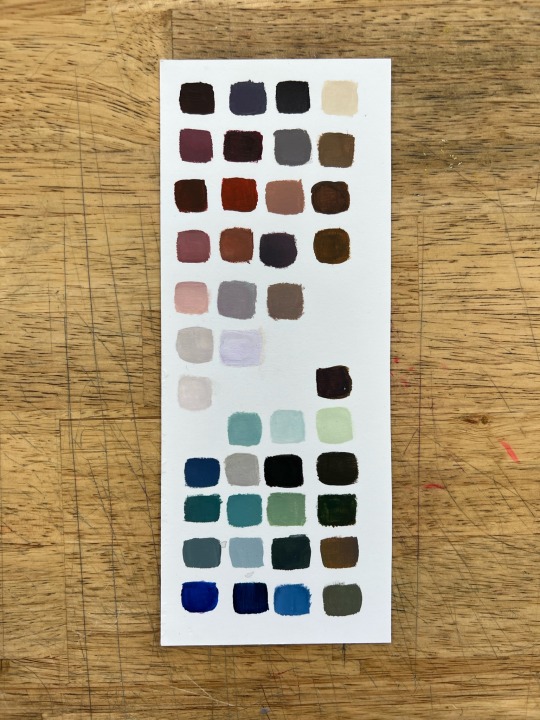
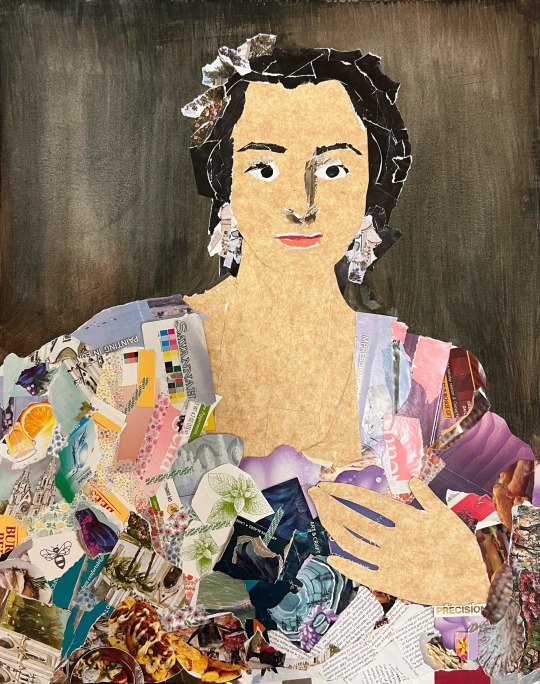
My completed work for Project 1: Paint, Pixels, and Pixie Sticks
Artist’s statement:
My goal for this project is to show how color presents itself in a work of art. For this project, I am analyzing the colors in the painting The Countess Anna Katharina Orzelska by Rosalba Carriera and showing their interaction. To capture the color palette of the work, I have created an alternative version of a color wheel. For the color wheel, I am using an organic, plant-like shape to mimic the floral design of the Countess’ dress. To study the range of colors, I am selecting a detailed section of the painting, and transferring it into pixel format. Using cut squares of ColorAid paper to match the pixels, I reproduce the image as closely as possible to understand the colors incorporated in the painting. Finally, I recreate the full painting using a paper collage technique. Without focusing specifically on detailed shapes, I use various found paper materials in a placement that emulates the overall feeling of the colors in the original painting.
0 notes
Text
Premi Ubu 2022, per la prima volta a Bologna

Premi Ubu 2022, per la prima volta a Bologna.
Per la prima volta il Teatro Arena del Sole di Bologna ospita la cerimonia di assegnazione dei Premi Ubu 2022 in sala Leo de Berardinis, lunedì 12 dicembre dalle ore 20.00 e, come ogni anno dal 2016, in diretta su Rai Radio3 dalle 20.30, all’interno del palinsesto di Radio3Suite.
La serata sarà condotta da Laura Palmieri, curatrice del Teatro di Radio3 (con Antonio Audino), e dallo scrittore, giornalista e conduttore di Fahrenheit e Pantagruel Graziano Graziani. La serata inoltre sarà arricchita dagli interventi musicali del musicista, attore e scrittore Ivan Talarico, dalla partecipazione speciale di Alessandro Bergonzoni e dall’incursione scenica dell’attrice Matilde Vigna, candidata al Premio Ubu 2022 – "Miglior nuovo testo italiano e scrittura drammaturgica" con Una riga nera al piano di
sopra (produzione ERT).
L’ingresso è libero con prenotazione obbligatoria.
I Premi Ubu ̶̶ gli Oscar del teatro italiano, come amava definirli Franco Quadri (1936-2011), il critico ed editore che li ha ideati nel 1978 ̶̶ giungono all’edizione numero quarantaquattro, preparandosi a ricreare la comunità che li segue da oltre quarant’anni e che unisce artisti, critici e spettatori per una festa di fine anno.
Dopo diverse edizioni al Piccolo Teatro di Milano (con cui mantengono un legame storico) e l’edizione biennale 20202021 al Cocoricò di Riccione, i Premi Ubu approdano quindi a Bologna, all’Arena del Sole, ospitati da Emilia Romagna Teatro ERT / Teatro Nazionale.
La quarantaquattresima edizione dei Premi Ubu - unici riconoscimenti che vengono attribuiti tramite referendum - è stata occasione di un processo di radicamento del Comitato scientifico (Lorenzo Donati, Roberta Ferraresi, Graziano Graziani, Laura Gemini, Maddalena Giovannelli, Leonardo Mello, Rossella Menna) che, da qualche anno, supervisiona il funzionamento della consultazione, come sempre svoltasi in due fasi: dapprima l’invio delle preferenze da parte di ogni votante, cui è seguito il ballottaggio che decreta i vincitori.
Attribuiti dalla votazione di quasi 80 tra critici e studiosi teatrali, i premi Ubu con le loro 17 categorie, vanno dallo Spettacolo dell’anno ai Premi Speciali, dal Premio alla carriera a quello al Migliore spettacolo di danza. Nella categoria dei Migliori attori e attrici o performer, oltre ai protagonisti più acclamati, particolare attenzione è data ai giovani con le categorie under 35. Si passa poi ai percorsi del "dietro le quinte" con il premio al Migliore curatore/curatrice o organizzatore/organizzatrice, alla drammaturgia (con una doppia categoria: testi o scritture drammaturgiche sia italiane che straniere).
Infine musiche o sound-design, luci e costumi, fino al Miglior spettacolo straniero rappresentato in Italia, per una ricognizione della scena contemporanea.
Inoltre l’Associazione Ubu per Franco Quadri ha lavorato anche quest’anno documentando la stagione di riferimento in un database che raccoglie oltre 600 spettacoli prodotti in Italia tra il 1° settembre 2021 e il 31 agosto 2022.
I gruppi d’ascolto
Sono aperte le iscrizioni dei gruppi d’ascolto che da tutta Italia potranno interagire e commentare con l’hashtag #premiubu2022. Per iscriversi è possibile inviare una mail a: [email protected]
L'ingresso all'Arena del Sole è gratuito con prenotazione obbligatoria sul sito del Teatro (www./bologna.emiliaromagnateatro.com) e su quello dei Premi Ubu (www.premiubu.it).
I Premi Ubu 2022 sono realizzati dall’Associazione Ubu per Franco Quadri con il coordinamento di Jacopo Quadri, Cheti Corsini, Graziano Graziani, Leonardo Mello e Rosalba Ruggeri. Con il sostegno del Ministero della Cultura, Regione Emilia-Romagna, Comune di Bologna; con la collaborazione di: Ubulibri, Cronopios Eventi, Altre Velocità e Patto per la Lettura/Bologna.
Teatro Arena del Sole, via Indipendenza 44 – Bologna
Biglietteria: dal martedì al sabato dalle ore 11.00 alle 14.00 e dalle 16.30 alle 19.00
Tel. 051 2910910 - [email protected] | bologna.emiliaromagnateatro.com
...
#notizie #news #breakingnews #cronaca #politica #eventi #sport #moda
Read the full article
0 notes
Photo



Paola Agosti (photographs) – Silvia Bordini (text) – Rosalba Spagnoletti (text) – Annalisa Usai (text), Riprendiamoci la vita. Immagini del movimento delle donne, Savelli, Roma, 1976 [s.t. foto libreria galleria, Roma]
#graphic design#photography#book#cover#book cover#paola agosti#silvia bordini#rosalba spagnoletti#annalisa usai#savelli#1970s
35 notes
·
View notes
Text
Today the Church remembers St. Phoebe, Deaconess and Witness to the Faithul
Ora pro nobis
Phoebe was a first-century Christian woman mentioned by the Apostle Paul in his Epistle to the Romans, verses 16:1-2. A notable woman in the church of Cenchreae, she was trusted by Paul to deliver his letter to the Romans. Paul refers to her both as a "servant" or "deacon" (Greek diakonos) and as a helper or patron of many (Greek prostatis). This is the only place in the New Testament where a woman is specifically referred to with these two distinctions. Paul introduces Phoebe as his emissary to the church in Rome and, because they are not acquainted with her, Paul provides them with her credentials.
Paul's letter to the Romans was written in Corinth sometime between the years AD 56 and 58, in order to solicit support for an anticipated missionary journey to Spain. Although he had not yet visited Rome, Paul would have been familiar with the community and its circumstances through Priscilla and Aquila, who were in Corinth, having previously lived in Rome. Biblical scholars are divided as to whether Chapter 16, Paul's letter of recommendation for Phoebe, was intended for Rome, with whose Christian community he was not acquainted, or with the more familiar community at Ephesus.
“I commend to you our sister Phoebe, a deacon of the church in Cenchreae. I ask you to receive her in the Lord in a way worthy of his people and to give her any help she may need from you, for she has been the benefactor of many people, including me.”
— Paul [Rom. 16:1-2]
Some scholars believe Phoebe was responsible for delivering Paul's epistle to the Roman Christian church. Phoebe is the only woman named as deacon in the Bible.
Greek terms for her titles
diakonos
Apostle Paul used the Greek diakonos (διάκονος) to designate Phoebe as a deacon. "Deacon" is a transliteration of the Greek, and in Paul's writings sometimes refers to a Christian designated to serve as a specially-appointed "assistant" to the overseers of a church, and at others refers to "servants" in a general sense. In the letter to the Romans, apart from the debated case of Phoebe, it always refers to "servants" in the generic sense, as opposed to a church office. However, at this inaugural stage in the Church's formation it is no doubt premature to think of offices as being consistent or clearly defined, and Rosalba Manes argues that Paul's use of the term "deacon" suggests that, like Stephen and Philip, Phoebe's ministry may have extended beyond charitable works to include preaching and evangelization.
"Likewise the women"
While some scholars believe Paul restricted the office of deacon to men, others do not, since, when describing the qualities that the office-holders called "deacons" must possess, Paul wrote in 1 Timothy 3:11 gunaikas (Greek for "women") hosautos (Greek for "likewise"), translated "likewise the women." They, likewise, are to be "worthy of respect, not malicious talkers but temperate and trustworthy in everything." The "likewise" indicated that the women deacons were to live according to the same standards as the men deacons (see also the Apostle Paul's use of the term "likewise" in Romans 1:27, 1 Cor. 7:3,4,22, and Titus 2:3,6).
prostatis
In classical Greek the word prostates (προστάτης) (feminine, prostatis) was used to mean either a chief or leader, or a guardian or protector, often in a religious context; it was later used also to translate the Roman concept of a patron. The Apostle Paul's use indicates that its range of meanings had not changed by New Testament times. This suggests that Phoebe was a woman of means, who, among other things, contributed financial support to Paul's apostolate, and probably hosted the house church of Cenchreae in her home, as well as, providing shelter and hospitality to Paul when in the town.
Almighty God, you have surrounded us with a great cloud of witnesses: Grant that we, encouraged by the good example of your servant Phoebe, may persevere in running the race that is set before us, until at last we may with him attain to your eternal joy; through Jesus Christ, the pioneer and perfecter of our faith, who lives and reigns with you and the Holy Spirit, one God, forever and ever. Amen.

3 notes
·
View notes
Photo

Portrait of a Woman, Rosalba Carriera, ca. 1715, Smithsonian: Cooper Hewitt, Smithsonian Design Museum
Size: H x W (framed): 30.8 × 25.2 cm (12 1/8 × 9 15/16 in.)
Medium: Pastel on paper
https://collection.cooperhewitt.org/view/objects/asitem/id/58366
16 notes
·
View notes
Text






• Evening dress, long tunic, cape.
Designer: Madeleine Vionnet
Place of origin: Paris
Date: 1937, summer collection (haute couture)
Medium: Cape and dress in Rosalba Crepe and silver lamé.
#1930's#1930's fashion#1930's dress#vintage#vintage clothing#vintage fashion#vintage dress#dress#fashion#fashion history#history of fashion#evening dress#tunic#cape#Madeleine Vionnet#summer collection#1937#france#haute couture
8K notes
·
View notes
Photo

JARtB House in Melbourne, #Australia by Kavellaris Urban Design (KUD). JARtB House reconnects the abandoned notion that Art and Architecture are s e p a r a t e techne. Part House and part Art Gallery. The synthesis of the two typologies are redefined into a singular expression. A new hybrid is institutionalised. Read more: Link in bio! Architecture firm: @kavellarisurbandesign. Location: Toorak, Melbourne, Australia Built area: 460 m² Photography: Peter Bennetts Project name: JARtB House Principal architect: Billy Kavellaris Design team: Billy Kavellaris Interior design: Billy Kavellaris Design year: 2017 Completion year: 2019 Site area: 555 m² Landscape: Kavellaris Urban Design Civil engineer: Oniell Group Structural engineer: Oniell Group Lighting: Billy Kavellaris Construction: Kavellaris Urban Design Client: Billy and Rosalba Kavellaris #melbourne #awesome #архитектура www.amazingarchitecture.com ✔ A collection of the best contemporary architecture to inspire you. #design #architecture #amazingarchitecture #architect #arquitectura #luxury #realestate #life #cute #architettura #interiordesign #photooftheday #love #travel #construction #furniture #instagood #fashion #beautiful #archilovers #home #house #amazing #picoftheday #architecturephotography #معماری (Toorak, Victoria, Australia) https://www.instagram.com/p/CBj3r0bFDdq/?igshid=qc0r3ozix77n
#australia#melbourne#awesome#архитектура#design#architecture#amazingarchitecture#architect#arquitectura#luxury#realestate#life#cute#architettura#interiordesign#photooftheday#love#travel#construction#furniture#instagood#fashion#beautiful#archilovers#home#house#amazing#picoftheday#architecturephotography#معماری
18 notes
·
View notes
Photo
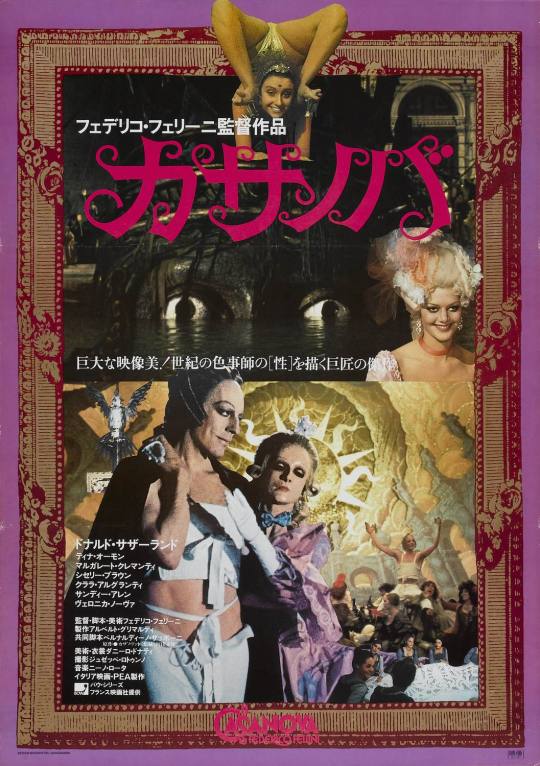
Fellini’s Casanova screencaps!!
In these dull days of confinement, I hope I will deilght your mood a little with the colourful screencaps of Fellini’s Casanova :D
Fellini’s Casanova (Il Casanova di Federico Fellini) is a 1976 Italian film by director Federico Fellini, adapted from the autobiography of Giacomo Casanova, the 18th-century adventurer and writer.
Shot entirely at the Cinecittà studios in Rome, the film won an Academy Award for Best Costume Design, with the Oscar going to Danilo Donati.
The film portrays Casanova’s life as a journey into trivial sexual abandonment. Any meaningful emotion or sensuality is eclipsed by increasingly strange situations. The narrative presents Casanova’s adventures in a detached, methodical fashion, as the respect for which he yearns is constantly undermined by his more basic urges.
Plot (it may contain spoilers)
The film opens with a carnival in Venice as a prelude to a series of erotic encounters that follow Giacomo Casanova through the cities of 18th-century Europe. The organizers of the festival attempt to raise a gigantic bust from the water; this fails, which is taken as a bad omen. Casanova is then introduced, as he visits one of Venice’s islands to copulate with a fake nun for the pleasure of a rich voyeur; Casanova succeeds in entertaining him, but is frustrated that the man finds no interest in his research into alchemy and his further scheming. As he rows back to the mainland, Casanova is arrested, judged and imprisoned by the High Court over his famed debauchery.
During his time in prison, Casanova reminisces of his affairs with a dressmaker and later on with one of her junior employees, Anna Maria, who suffers from frequent fainting and requires constant bloodletting. He eventually consummates his desire for Anna Maria. Back in prison, Casanova escapes through the roof and exiles himself from Venice, being taken into the Paris court of Madame d'Urfé. The Madame, an aged woman, enthralled by Casanova’s apparent knowledge of alchemy, wishes to transform her soul into a man’s through ritualistic intercourse with him (an act that requires the presence of a younger woman in the room, so that Casanova can get aroused). Fortuitously, Casanova encounters his brother, whose girlfriend he entices away. Casanova then moves to the court of a hunchback, Du Bois, in between taking charge of a beautiful girl—"the love of [his] life"—Henriette. Du Bois puts on a homosexual theatrical performance for his guests that unsettles some of them; Casanova is brought to tears as Henriette plays some music. The lovers vow fidelity to each other, but the following morning Henriette has disappeared. Du Bois informs Casanova that an emissary of a far-away court has reclaimed Henriette, and she’s left a request that Casanova not attempt to follow her.
While in London, Casanova is robbed by two women and he attempts suicide by drowning himself in the Thames. A vision of a giantess and two dwarves distracts him; he follows them to a frost fair, where he arm-wrestles the giantess—a princess—and later pays to watch her bathe with the dwarves. Casanova resumes his travelling the following day. He attends a deranged party at Lord Talou’s palace in Rome, where he wins a bet with a stagecoach driver, Righetto, over how many orgasms he can have in one hour. The competition brings him higher acclaim. In Switzerland he falls in love with an alchemist’s daughter, Isabella, who fails to keep an appointment to go to Dresden with him; Casanova instead partakes in an orgy within the hostel he’s been stranded in. In Dresden, he has a brief chance encounter with his estranged mother in a theater. He then moves to a court in Württemberg, where his desire to be taken seriously as a writer/inventor is frustrated by the court’s orgiastic, wild nature. It is here that he meets Rosalba, a mechanical doll with whom he shares a dance and later on goes to bed with.
Time goes by and an old Casanova finds himself librarian to Count Waldstein at his castle in Dux. Life at the castle is more than frustrating for Casanova, as he is made to eat with other servants and does not get the respect nor the food he claims to deserve. Waldstein’s manservant, Faulkircher, and his lover Vidarol, make him an object of mockery and animosity. A portrait of him is hanged and defecated on. Later on, during a fervent poetry recital, a court member fails to suppress a giggle at Casanova, who, humiliated and disappointed, goes back up to his room. The final scene has a weary, bloodshot Casanova cringing in an armchair and recounting a recent dream. In this dream, Casanova is back in Venice. He catches a glimpse of the giant bust seen in the beginning of the film, buried under thick layers of ice in the lagoon. He chases the ghosts of his past lovers, all of whom disappear. An ornate stagecoach beckons him to join its passengers. He finally meets with Rosalba, the mechanical doll, once again. They quietly dance with each other.
Cast
Donald Sutherland as Giacomo Casanova
Tina Aumont as Henriette
Cicely Browne as Marquise d'Urfé
Carmen Scarpitta as Madame Charpillon
Clara Algranti as Marcolina
Daniela Gatti as Giselda
Margareth Clementi as Sister Maddalena
Mario Cencelli as Dr. Mobius
Olimpia Carlisi as Isabella’s sister
Silvana Fusacchia as Isabella
Chesty Morgan as Barberina
Leda Lojodice as Rosalba the Mechanical doll
Sandra Elaine Allen as Angelina the Giantess
Marika Rivera as Astrodi
Diane Kurys as Madame Charpillon’s daughter
Alessandra Belloni as Princess
Donald Hodson as Hungarian captain
#Tina Aumont#Donald Sutherland#Federico Fellini#Fellini's Casanova#1976 Fellini's Casanova#my screencaps
36 notes
·
View notes
Photo

Portrait of a Woman, Rosalba Carriera, ca. 1715, Smithsonian: Cooper Hewitt, Smithsonian Design Museum
Medium: Pastel on paper
http://collection.cooperhewitt.org/view/objects/asitem/id/58366
1 note
·
View note
Photo








sticker-charm designs for a handful of my table top chars (i already did Ada and Gauzra)
the gods: Rosalba Martingale, The Lady of Vengeance and Serendipity Paige, mortal avatar of The Mad Muse
the retired: K’nessan Daemis-Filemonte, tiefling warpriest of Sarenrae and Margus Ironwood, half-orc ranger
the paused: Mekala Asada, shabti warpriest of Sehkmet and Nemo, storm-sylph fighter
the yet to begin: Theodora Payne, kyton-spawn swashbuckler and Jelena Thorne, firbolg cleric of The Green Faith
#my art#digital art#my ocs#dnd stuff#pathfinderstuff#i can post jellie since the only friend that follows me isn't playing in her game apparently
6 notes
·
View notes
Text

Turt designs for this AU I made just for designs,,, I imagine this AU is a more distant turtleverse variation,,,, half the turts are female and half of them are male cuz I wanted to shake things up. Fem. Don is named Dionara and Fem. Raph is Rosalba
61 notes
·
View notes
Text

((OOC: Another Rosalba doot!
She’s a distant AU variation of Raphael 2012,, just a character I made to mess with designs, maybe a lil story, and sketches. I love drawing her.
The little bit of story I’ve made for her: Like many Raphs, Rosalba’s very rough and tumble, and much like 1984 (original Raph) she isn’t a fan of her sewer home underground life and she actually likes violence. She‘s best friends with Casey Jones (female in this AU though not everyone is necessarily genderbent in this au) and spends a lot of time with her, even more so than her siblings, because she kinda hates their lair since she was cooped up in it for so long. She vents and revels in fights, going to underground figting rings with Casey or beating the shit out of smalltime criminals.
Like I said, Rosalba is more of a vigilante like Casey, and she’s a bit of a rogue among her siblings. She still loves her fam but! She’s vv roguish and her particular taste for fighting separates her from her siblings in that respect.))
21 notes
·
View notes